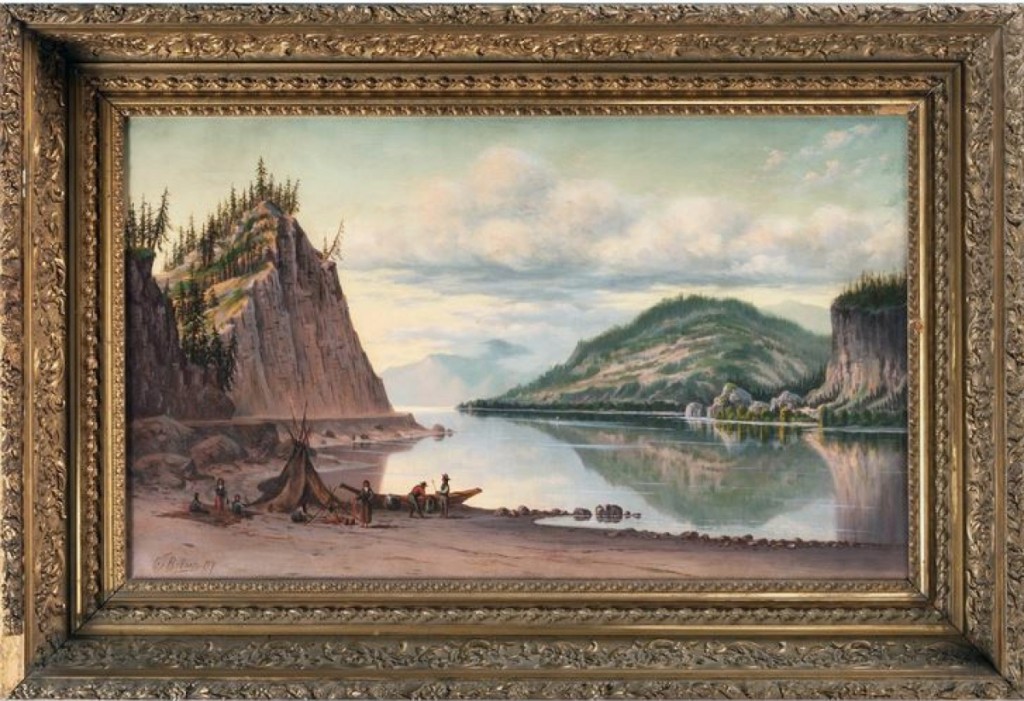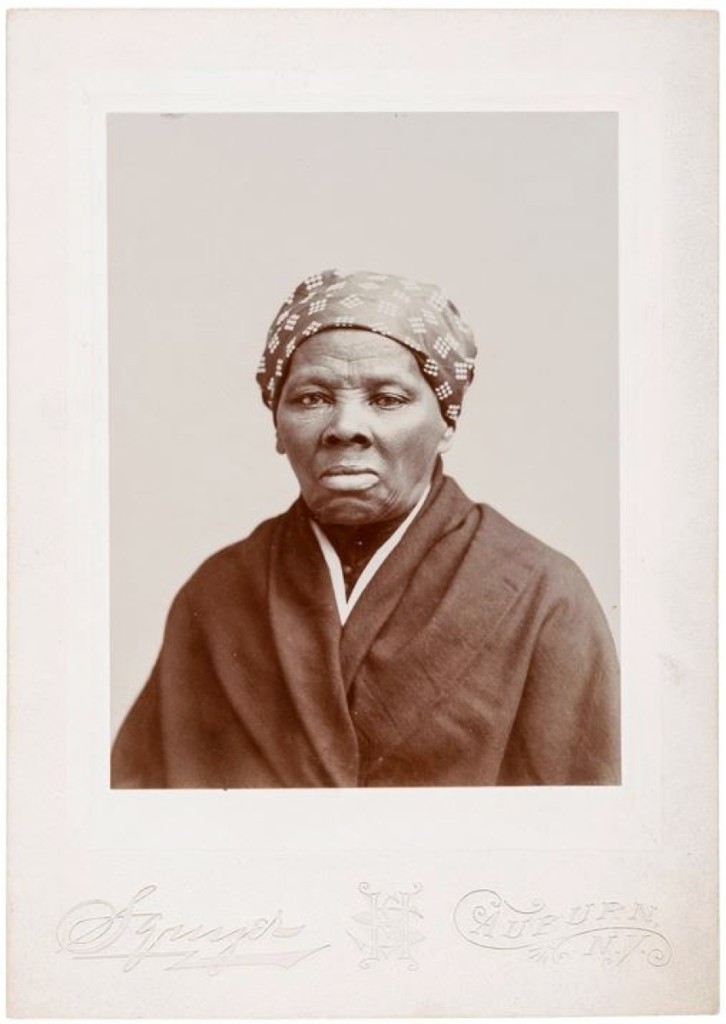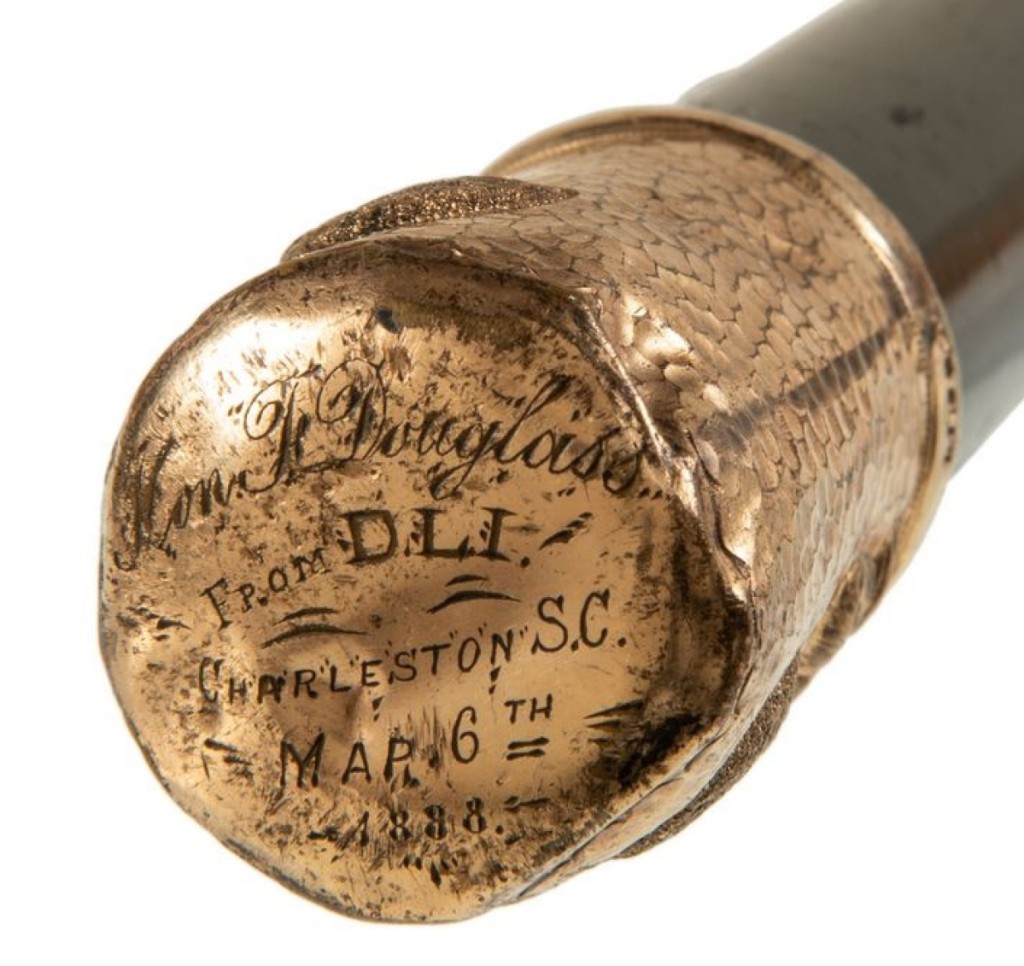
The sale’s top lot was found at $59,375 for Grafton Tyler Brown’s 1887 “Mitchell’s Point, Looking Down the Columbia,” oil on canvas, 18 by 30 inches. Brown’s painting features a group of possibly Wisham Indians on the shore of the Columbia River. On the left is Mitchell’s Point, and cut around the base of the ridge is likely a railroad bed for the Oregon Railway & Navigation Company.
Review by Greg Smith, Images Courtesy Cowan’s Auctions
CINCINNATI, OHIO – Nine of the top 12 lots in Cowan’s February 20 sale included early images of African American figures – the soldier, the heroine, the politician, the artist – that collectively told a story of African American struggle and determination in Nineteenth and early Twentieth Century America. They are powerful images. In these lots we are met with the gaze of Harriet Tubman, Frederick Douglass, Edmonia Lewis, Buffalo Soldiers, US Marshal Bass Reeves, Japanese Tommy, Blind Tom, Booker T. Washington and others.
The 316-lot sale was part one from the collection of Steve Turner, whose assembled mass aims to recount the history of African Americans and their role in settling the western frontier. Turner owns an eponymous contemporary art gallery in Los Angeles but began collecting African Americana when he acquired a photo at an antiques show in 1996. He said, “When I went to pay for the image, I asked the dealer to offer me similar material whenever he came across it. His reply has stuck with me: ‘Forget about it. Images of African Americans are as rare as hen’s teeth.’ I would find over the next two decades that he was unfortunately right.”
The auction would produce $612,691 in total sales and sold at 82 percent over the estimate.
The sale’s top lot was found at $59,375 for Grafton Tyler Brown’s 1887 oil on canvas “Mitchell’s Point, Looking Down the Columbia,” 18 by 30 inches, that sold to a private buyer. Brown moved west in 1858 where he became California’s first African American city view artist and lithographer. Today he is known for his bird’s-eye views, some of the finest-rendered examples of early California cities on record. Brown would travel and work throughout the West and Canada, but settled in Portland, Ore., in 1886, and would produce this painting shortly after. Cowan’s catalog notes the Native American camp seen on the shores of the Columbia River is likely a group of Wisham Indians. They stand before Mitchell’s Point, a rising ridge cut at its base and graded flat as it follows the curve of the rock around the edge of the water. The firm notes the flat cut appears to be the railroad bed for the Oregon Railway & Navigation Company’s tracks, symbolizing the convergence of past and then-present.
Rising well above its $5,000 estimate was American abolitionist Frederick Douglass’ walking stick that would sell for $37,500. The ebonized wood cane was topped with a gold-filled cap engraved “Hon. F. Douglass / From D.L.I. / Charleston S.C. / Mar. 6th / 1888.” The cap featured a repoussé design of three wild strawberries with leaves and flowers against a hammered background. Cowan’s notes, “In early March 1888, Douglass arrived in Charleston, South Carolina where he delivered versions of his ‘Self-Made Men’ and ‘European Travels’ addresses at Mount Zion church… He was honored afterward by an African American militia unit calling themselves the Douglass Light Infantry. According to a contemporaneous newspaper account, the infantry members serenaded him at their armory. They also presented him with this walking stick…” It sold to an institution.

Rising to $51,250 was a rare cabinet card of Underground Railroad heroine Harriet Tubman. The card is one of two known, the other in the Cayuga Museum of History and Art in Auburn, N.Y., Tubman’s hometown. She was approximately 70 years old in 1892 when this image was taken by Horatio Seymour Squyer, who operated a studio in Auburn. Cowan’s notes just six studio portraits of Tubman are known to exist and of those, this photo is the largest. It sold to a private collector.
At $51,250, the cabinet card of abolitionist and Underground Railroad guide Harriet Tubman was revered as the most powerful image in the sale, selling to a private collector. There is no smile on her face, her gaze cutting through the air with a solemn gravity. She took this portrait in 1892 at the studio of Horatio Seymour Squyer (1848-1905), Tubman was approximately 70 years old. The only other known example of this image is housed at the Cayuga Museum of History and Art in Auburn, N.Y.
“I’m privileged to have had the opportunity to research and work so closely with all of these objects, perhaps none so much as the beautiful cabinet card of Harriet Tubman,” said Danielle Linn, Cowan’s senior specialist. “She’s a personal hero of mine and I’m glad so many realized just how remarkable this image of her is. The image quality is incredible, especially considering the age, and the size gives you an amazingly detailed look at one of the most famous women in American history.”
At $33,620 was a group of four cartes de visite, including one of Christian Abraham Fleetwood (1840-1914), one of 18 African Americans who were awarded a Medal of Honor during the Civil War. A boudoir card featuring Buffalo Soldiers and Apache scouts in the US Army’s 10th Cavalry showed the outfit in all its glory. The US Army employed the outfit to pursue Geronimo, and Cowan’s said this is the only known example to show Apache scouts side-by-side with African American Buffalo Soldiers. “The Wilde Woman of Aiken” cabinet card, produced by J.A. Palmer (1825-1896), is perhaps the most iconic image associated with Edgefield face jugs. It brought $18,750. The image features an African American woman in a floral dress with an Edgefield face jug on the table in front of her, a large sunflower rising from its mouth. Cowan’s said the image was used to mock Oscar Wilde, who was touring the United States promoting the Aesthetic style. A cabinet card by John C.H. Grabill of a Buffalo Soldier wearing a large buffalo fur coat brought $16,250. A carte de visite of Edmonia Lewis, America’s first professional African American sculptor, sold for $15,000. It was taken by Boston photographer Augustus Marshall. Two cartes de visite of Frederick Douglass would sell well, one taken by Benjamin F. Smith in 1864 brought $12,500 and another taken by Samuel M. Fassett in 1878 brought $10,000. Douglass was the most photographed African American of the Nineteenth Century, and he took those photographs in an effort to supersede the traditional racist images of African Americans produced by whites that portrayed them as caricatures. Douglass’ goal was to promote the visual humanity of African Americans.

Taking the third highest result of the sale was this walking stick presented to abolitionist Frederick Douglass in 1888. Following a speech he gave at Mount Zion Church, an African American militia unit calling themselves the Douglass Light Infantry presented it to Douglass after they serenaded him at their armory. The walking stick with gold filled top brought $37,500 over a $5,000 estimate and sold to an as-yet unnamed institution.
First and early edition books by African American authors caught attention, including a first edition of Abby Fisher’s 1881 What Mrs. Fisher Knows About Old Southern Cooking, the second cookbook written by an African American to ever be published, which sold for $7,500. A 1907 first edition of The Home-Seeker’s Guide for African American homesteaders in Indian territory brought $6,875. The book was written to promote settlement in Muskogee, Okla., which saw its population rise from 4,000 inhabitants in 1901 to 25,000 in 1910.
“We were delighted to offer this important collection, and gratified at the response from both private and institutional collectors,” said Wes Cowan, vice chairman of Hindman Auctions. “The ephemeral material in the Turner collection is important, direct evidence of the struggles and triumphs of African Americans on their post-Civil War march to full citizenship.”
The second part of the Turner collection is slated for later this year. All prices reported include the buyer’s premium. For information, www.cowansauctions.com or 513-871-1670.



















